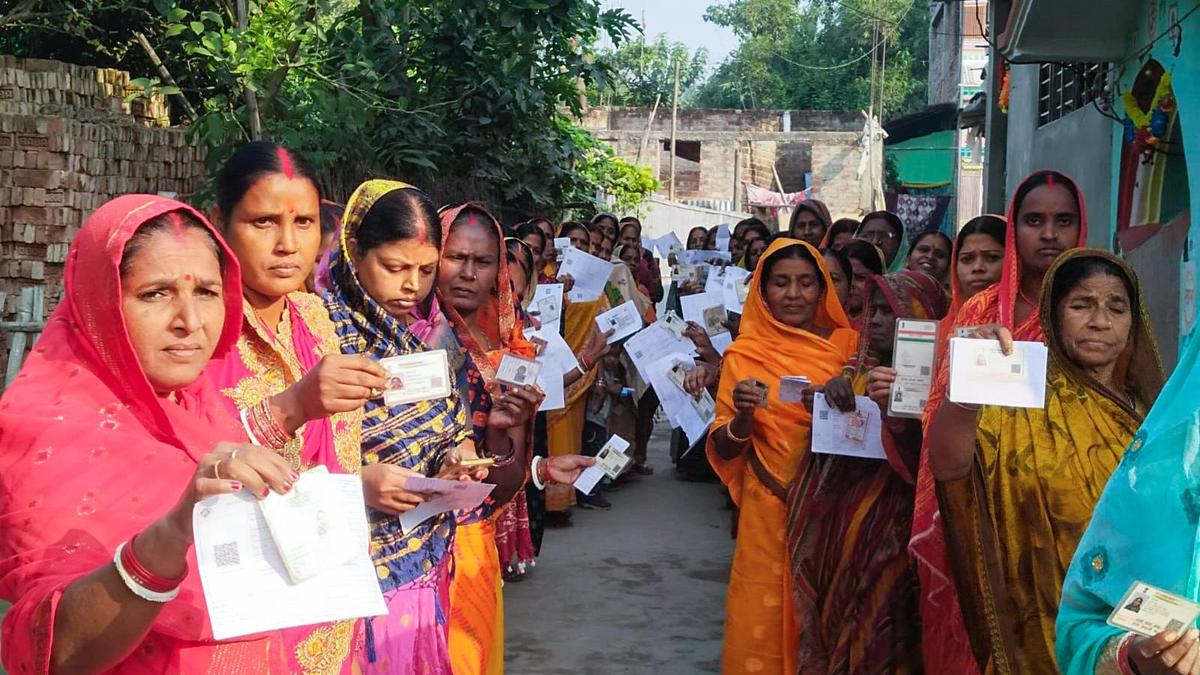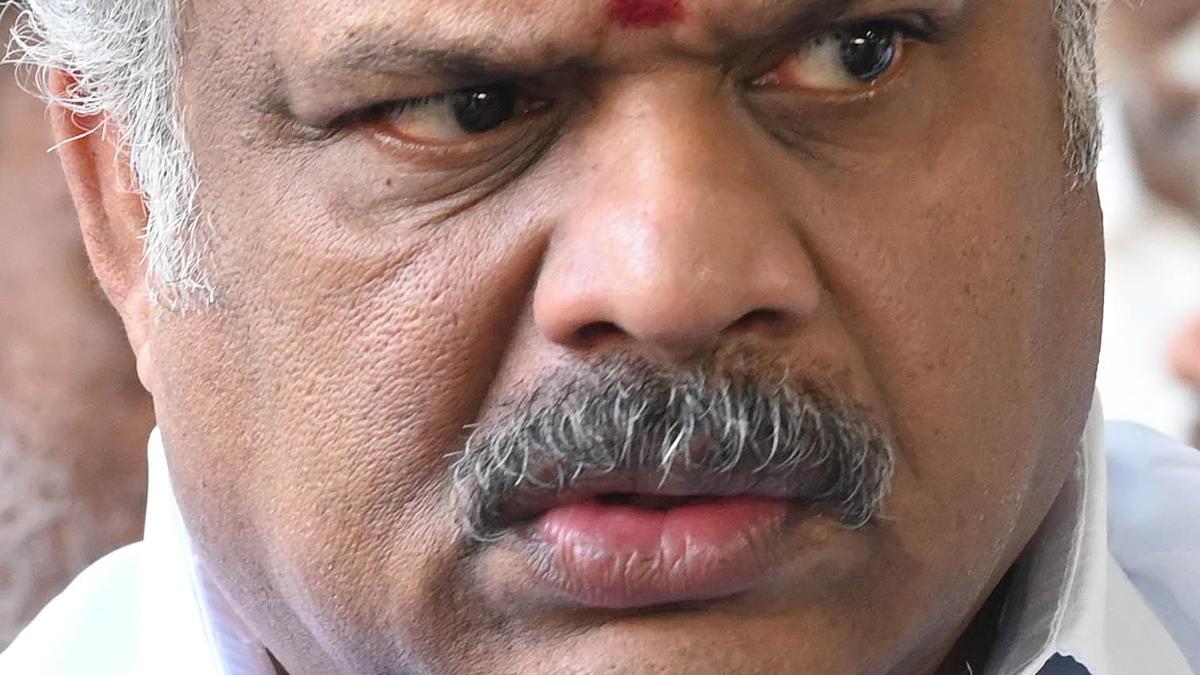Bihar election 2025 results: Surge in women voting helped JD(U) the most, eased NDA’s victory


Women voters wait in a queue to cast their vote for the second phase of the Bihar assembly election, in Katihar on Tuesday.
| Photo Credit: ANI
The Bihar 2025 election results reveal a clear pattern: in districts where the share of women voters exceeded that of men, the National Democratic Alliance’s vote share is considerably higher than the Mahagathbandhan’s. The contest between the two alliances was somewhat closer, as the vote share gap narrowed significantly in districts where the share of men and women voters were nearly the same or men outnumbered women. This data is based on district-wise polling numbers released by the ECI on November 12.
Table 1 shows the number of seats/districts with various shares of women voters in the 2025 Bihar Assembly Elections. For instance, in eight districts (comprising 53 seats), the share of women voters was 53%-55% in the 2025 Bihar Assembly elections and in thirteen districts (comprising 69 seats) the share of women voters was less than 50%.
The gap between the NDA and the MGB’s vote shares was much higher in districts where the share of women voters were higher (51% – 55%) and lower in places where the men and women voting numbers were comparable or men outnumbered women in voting. As seen in table 1, in the seats where the share of women voters were higher (51% – 55%), the gap between NDA and MGB ranged between 11-15% points, whereas in other seats, the gap was less than 10% points. So, while the NDA retained an edge overall, its performance was significantly better in places where women predominated voting.
The trends are based on results available until 12.30 p.m. on Friday.
Women voters outnumber men
We had already reported that despite men outnumbering women by around 42 lakh in the electoral rolls, following the Special Intensive Revision process in Bihar, 4 lakh more women turned out to vote in the 2025 Assembly elections (the provisional turnout for women was 71.6% and for men, it was 62.8%). This difference in women vs men voting was observed in the 2024 Lok Sabha elections as well, where the NDA won a similar vote share (48.2%) just as in the 2025 Assembly elections (47.6%).
One of the signature welfare measures implemented by the Nitish Kumar led NDA government in Bihar was the cash disbursal of Rs 10,000 to women across the State via the Mukhyamanthri Mahila Rozgar Yojana. This emphasised the importance accorded to women voters by the ruling coalition, in line with Mr Kumar’s strategy of reaching out to them through welfare measures and policies ever since he came to power in 2005.
These steps helped the JD(U) garner a significant edge over its rivals in the seats it contested. Table 2 adds party vote shares to the equation. A party-wise vote share analysis of districts along with turnout data shows that the JD(U) won higher vote shares in seats where the gap between women and men turnout was the highest. As shown in table 2, in eight districts comprising 53 seats where the share of women voters were between 53% to 55% of the electorate, the JD(U)’s vote share was a high 23.8% in contrast to 15.7% where the share of women voters equalled that of men (50% each).
The BJP’s vote share did not change as much across different categories, while the RJD did better in seats where the share of men voters was higher or was comparable to that of women. Clearly the women mandate played a significant difference in the 2025 elections, helping the JD(U) in particular.
The story will be updated with the final tally when all votes get counted. The figures are based on initial trends.
Published – November 14, 2025 01:21 pm IST




